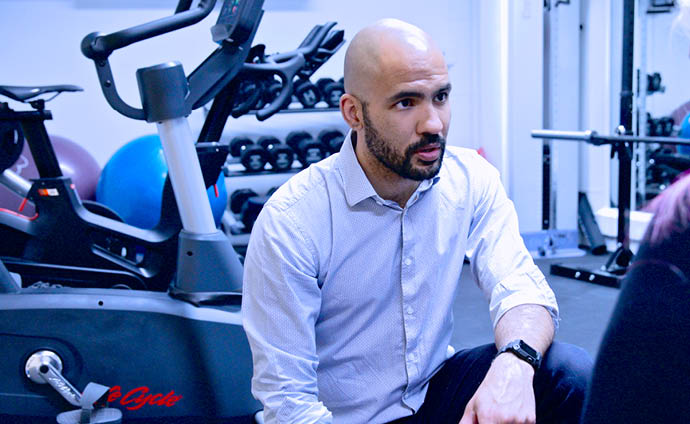Ant Brightwell is one of the Directors and Lead Physiotherapists at Spectrum’s London clinic. He is one of only five McKenzie Credentialed Therapists in London and he uses specialised techniques to treat and educate patients with neck and back pain, seeing impressively fast results.
This is a real case study from one of his recent patients, a late-forties male administrative professional, who spends a lot of time working at his desk. The following words, written by Ant, will give you an insight into what it’s like being treated at Spectrum —from assessment right through to discharge.
This patient initially presented to me complaining of pain in the back of his shoulder, towards his shoulder blade and it had been there for awhile and was pretty constant. According to him, there was no clear cause that he could think of, he just woke up one day with shoulder pain and then it slowly got worse over the course of a few days. He’d already been for a couple of massages to no avail, which made me think the issue wasn’t just a muscular issue in his shoulder — it was something else.
When I tested his shoulder, it was moving completely fine and the movement didn’t seem to aggravate it or add to the pain too much. So, then I moved across to his neck and when I asked him to go through a series of movements, there was an obvious discrepancy in the way his neck was moving. Rotating and laterally bending his neck was causing the pain to reproduce in his shoulder instead.
I asked him some deeper questions about what had happened in the lead up to the pain commencing, and even though there was no clear moment that brought it on, it coincided with work stress and having to work longer hours at his desk. I noticed his posture wasn’t great and I asked some more questions and worked out that his desk was set up so that he biases the same side as his sore shoulder, as he was looking at his screen slightly off-centre to that side.

Once we’d determined the cause of the initial issue I was able to suggest some changes to his desk setup to prevent it from happening again. Then we were able to make a start on treating the current pain. We began with McKenzie therapy for his neck, where we looked at offloading the neck with some traction and then moving into what we call retractions, which are a form of extension. He repeated those movements under the safe McKenzie guidelines for 10 repetitions initially and his neck movement improved and the pain provocation on the same movement was less intense.
I got him to do more of those and then sent him home with instructions to keep doing those exercises hourly. Before he left, I also did a lot of manual therapy and soft tissue release around the neck and back and he reported that he felt much better leaving the session. When he came back a week later for his next session he said his shoulder blade pain had halved and interestingly he had started to develop some neck pain on that same side. I explained to him that the neck pain was actually an encouraging sign that we call ‘centralisation’, where the pain seems to go back to the source of the pain and the origin of the issue, while the referred pain diminishes.
We continued down the same pathway, progressing the McKenzie exercises to the next stage, which was a more aggressive version of what he’d been doing before, along with the manual therapy. We also introduced some upper back and core exercises to maintain the improvements he was making and by the time he came back for his third session, the shoulder blade pain had completely gone and he just had neck pain. Again I reassured him that this was encouraging and that we’d solely address the neck pain from here on and it should go away following the next couple of sessions. It took us another two or three sessions but he resumed a full range of movement around his neck without any pain provocation around the neck itself or in the shoulder, with no weakness either.
One of the most important things to note about this case is that there was no clear trauma or massive incident that caused the acute pain — it wasn’t as if he had slipped a disc or anything. But the pain was built up from poor posture combined with longer work hours and stress. The desk setup wasn’t symmetrical, which isn’t ideal and one side was being overloaded. But most importantly, it wasn’t clear that it was his neck causing the problem because it wasn’t actually his neck that was hurting! Through thorough testing we were able to isolate that his shoulder pain was being caused by his neck and from there create a personalised treatment plan to get him back to pain-free.
Are you suffering from neck pain too? It might be time to book in for an assessment with the team at Spectrum. Contact us over the phone or via our website today.



